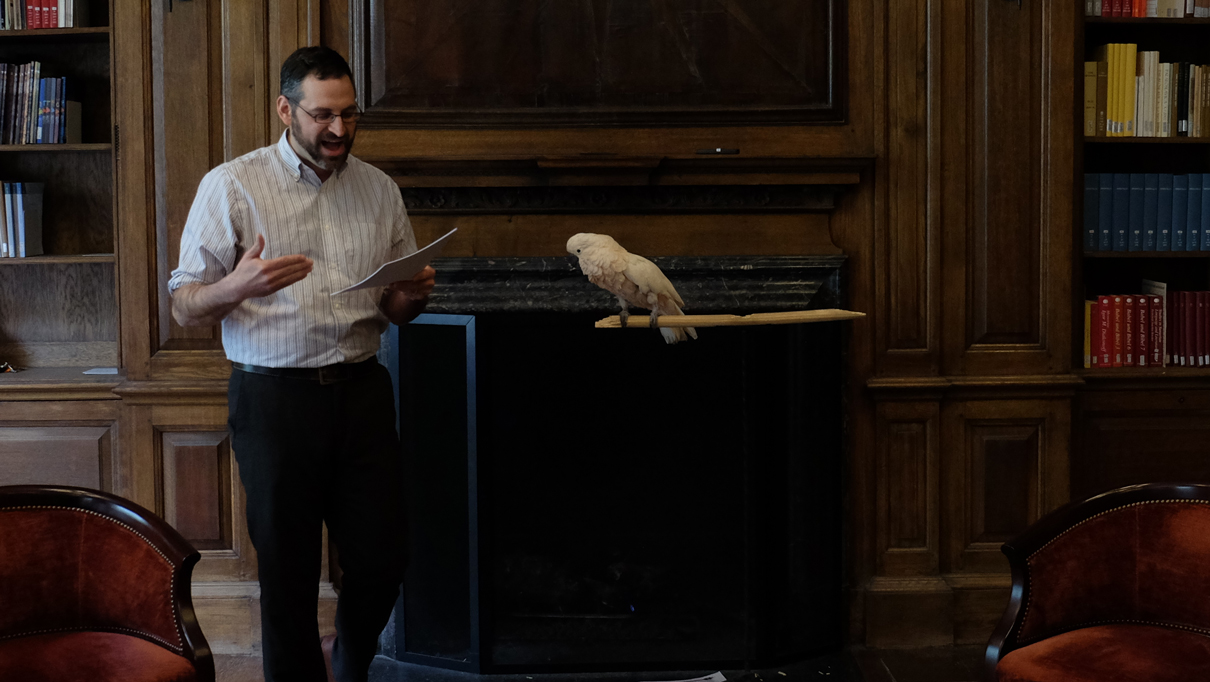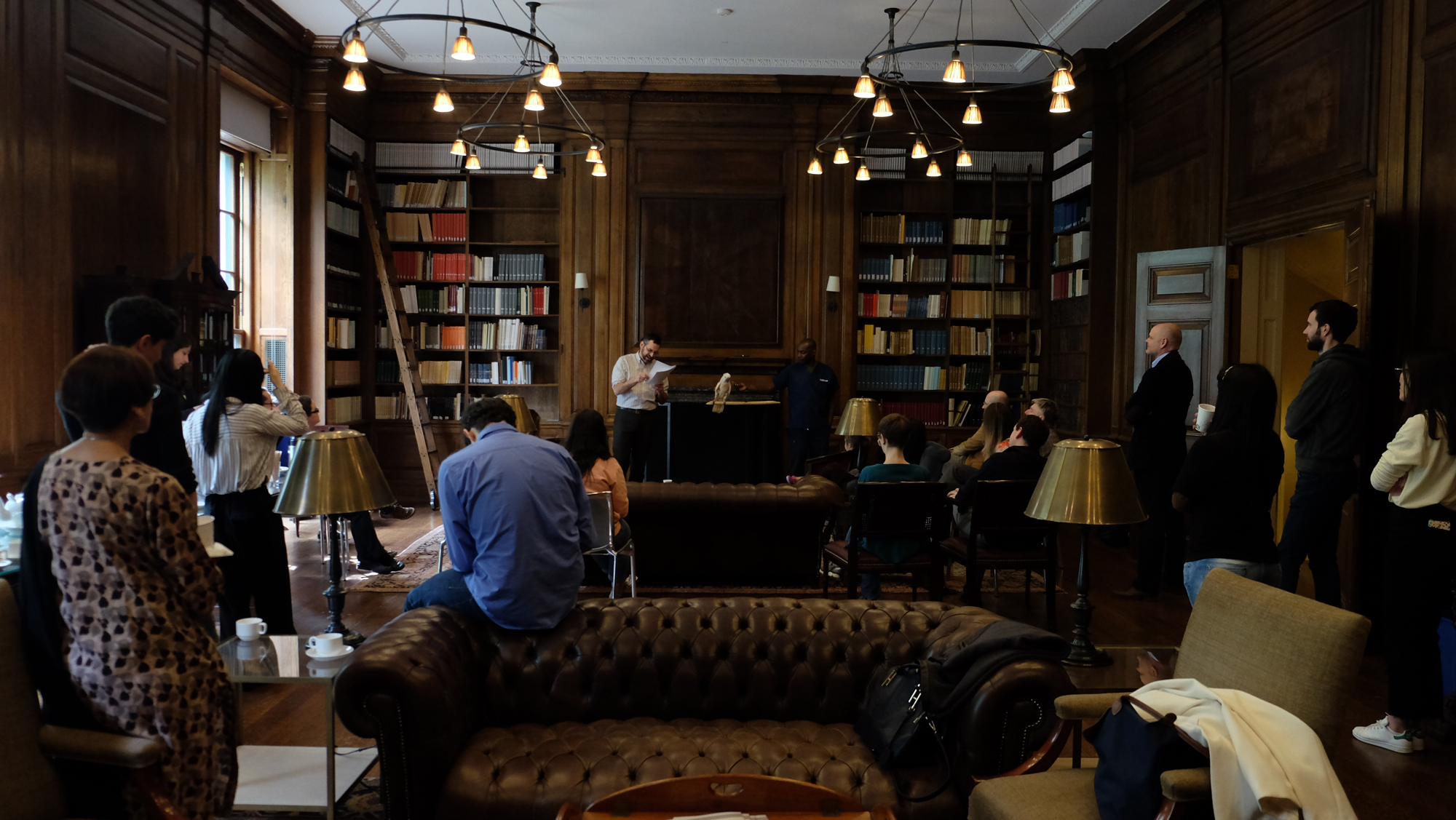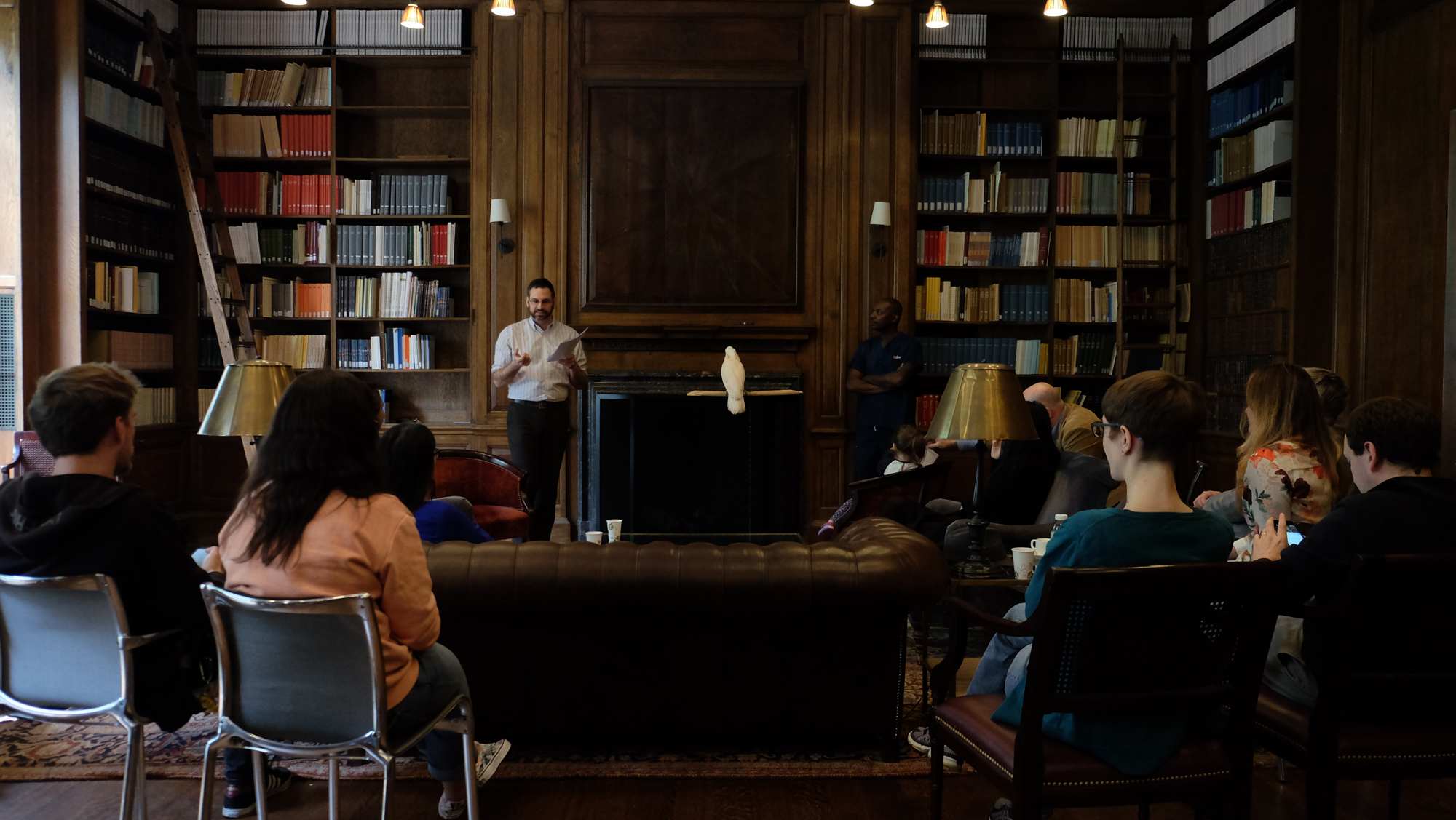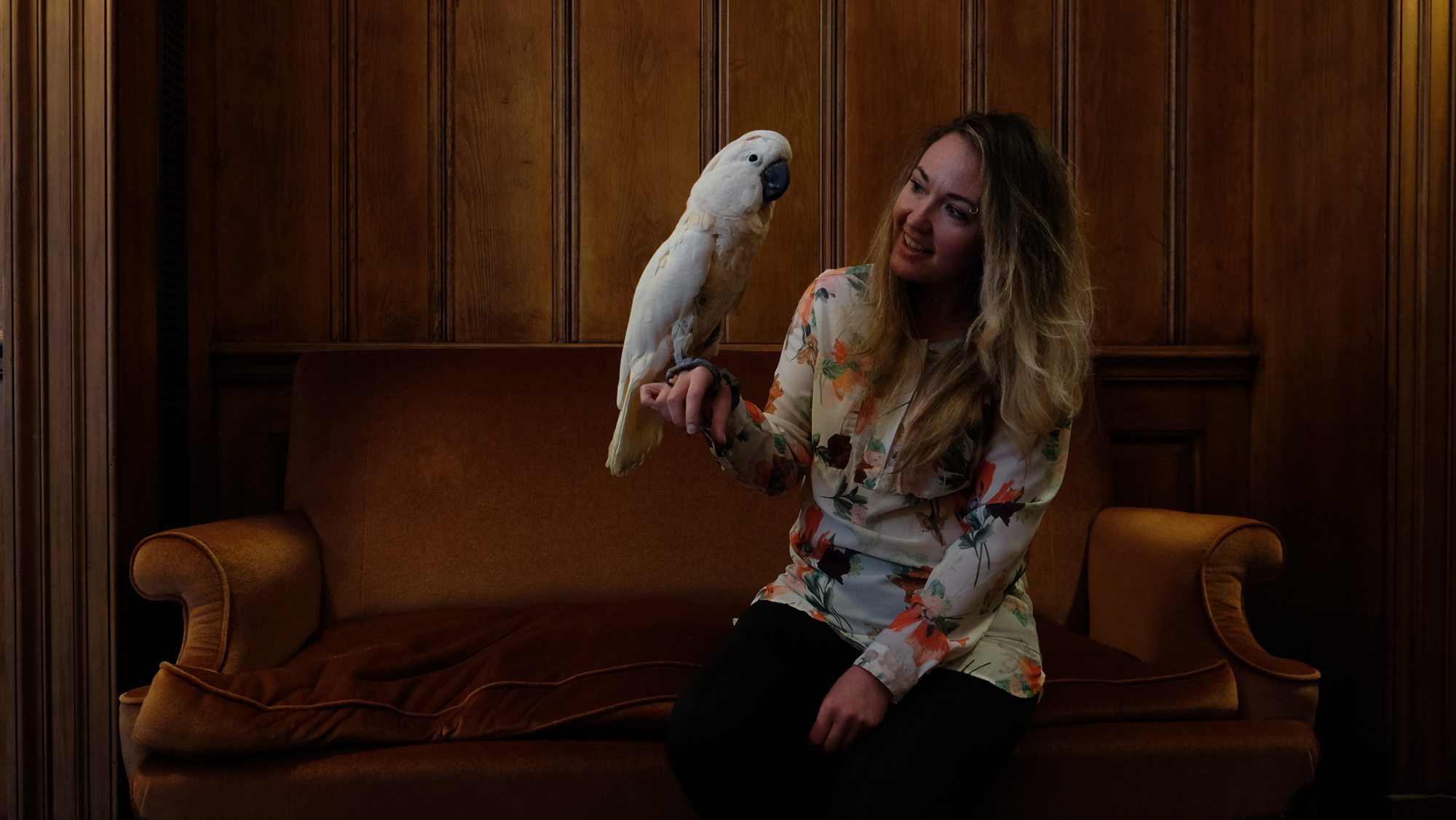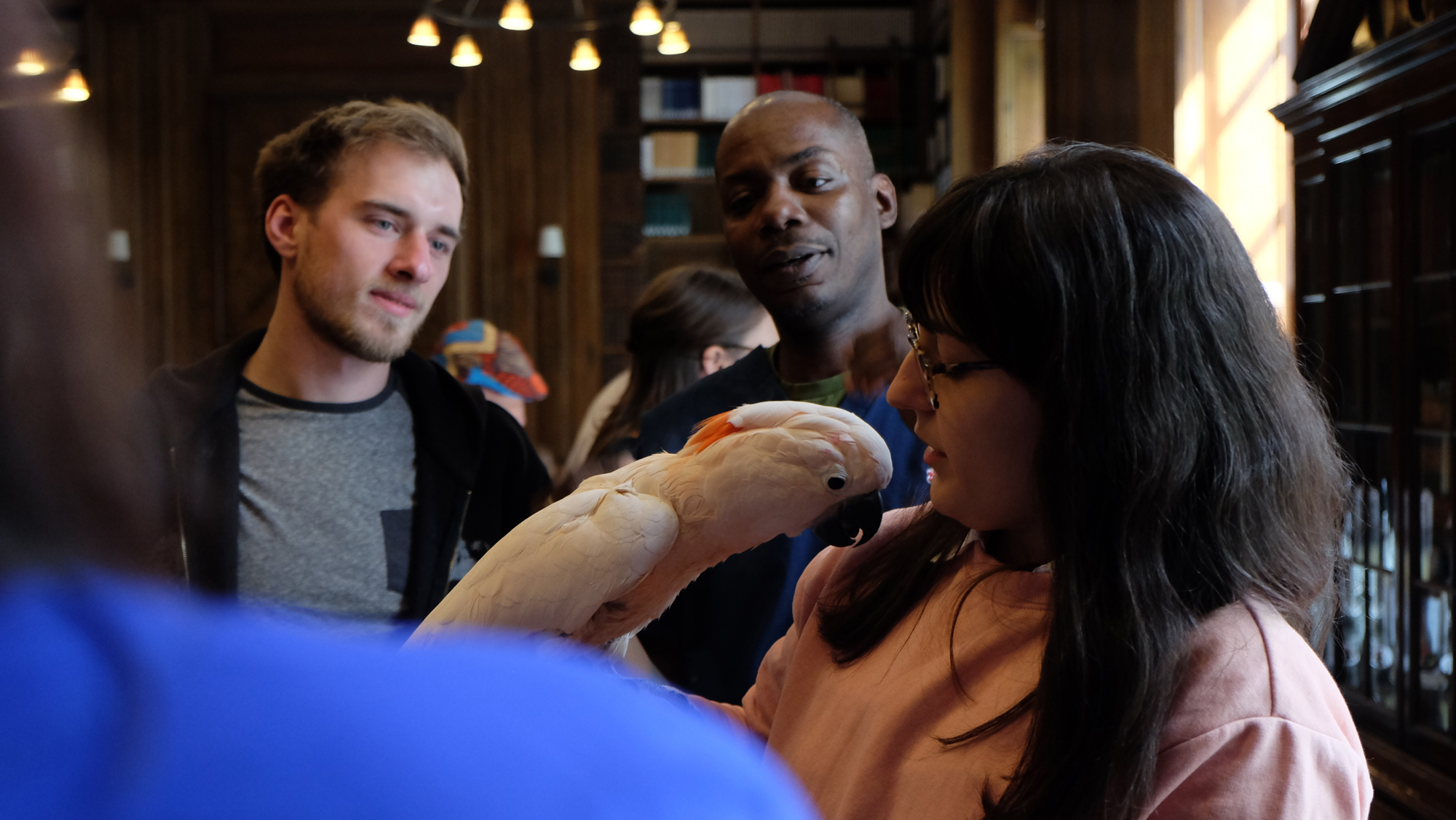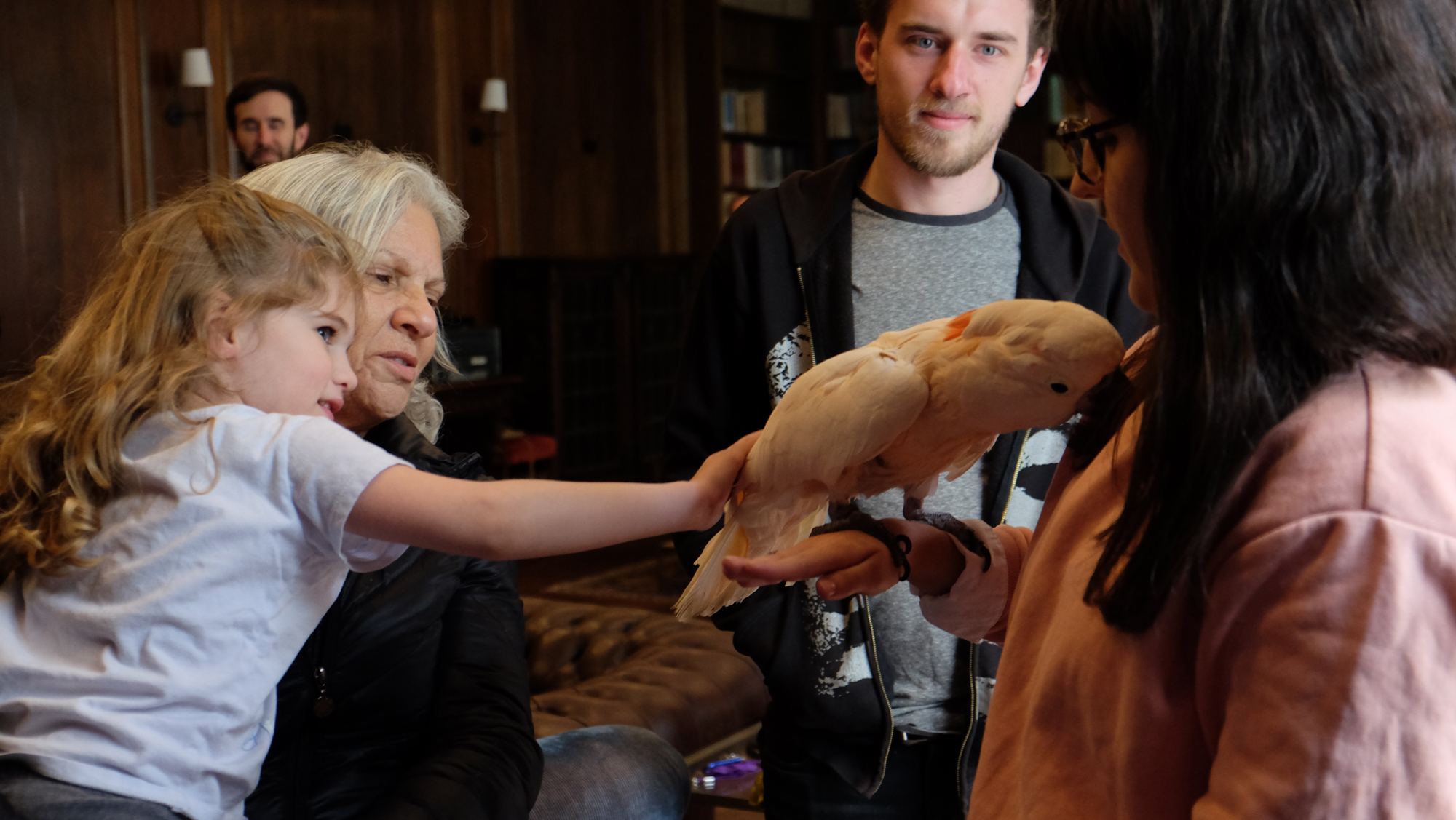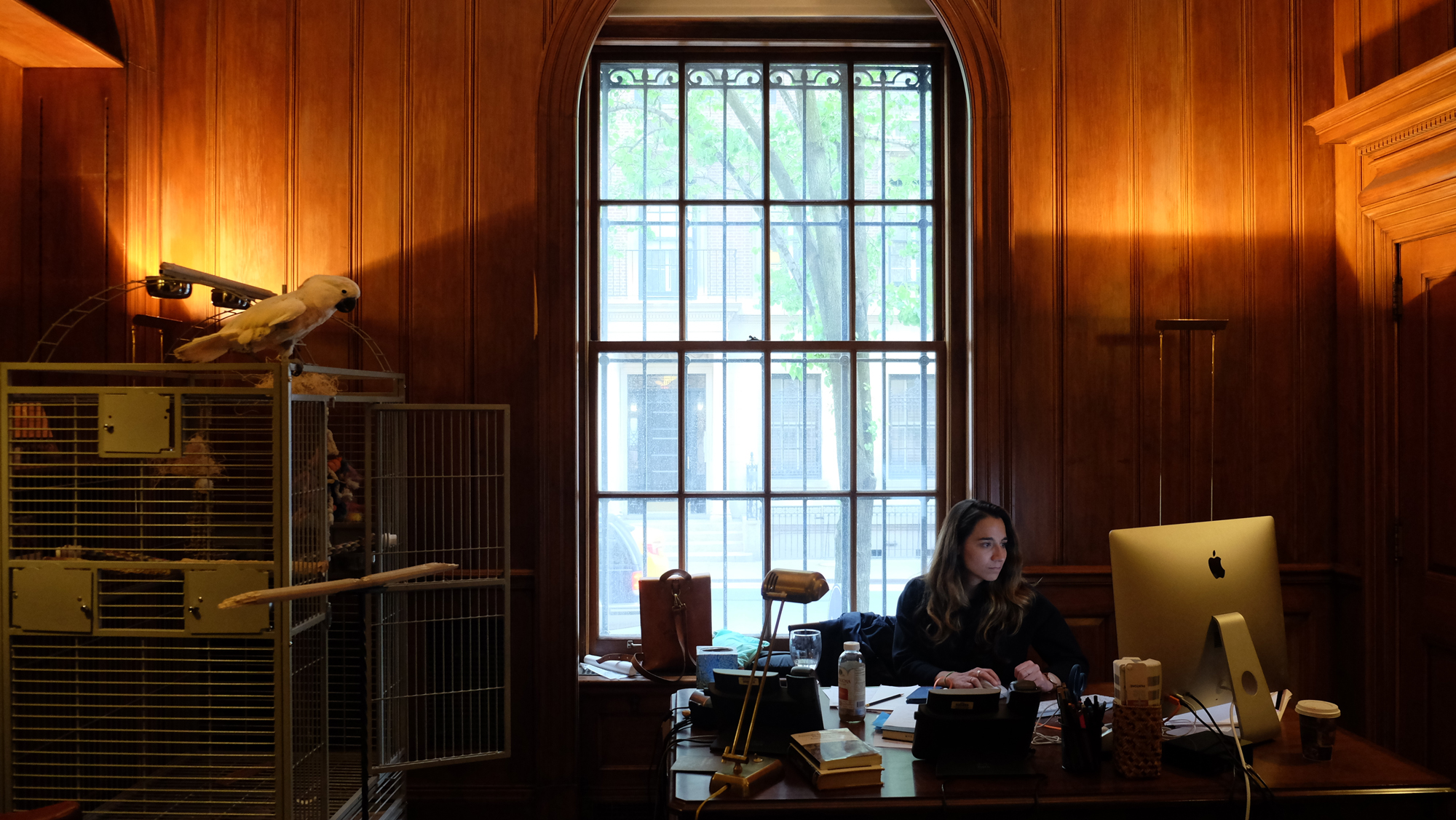ISAW Assistant Research Scholar Patrick Burns and Pinkie the parrot led a tea time talk on "Parrots in Antiquity."
The Oldest Song in the World at Pet Resources
Video Presents Mid-Point of . . . circle through New York Project
Alexander Jones, Interim Director and Professor of the History of the Exact Sciences in Antiquity at ISAW, Writes Limerick for Pinkie the Talking Parrot
Interim Director and Professor of the History of the Exact Sciences in Antiquity, Alexander Jones, has written a poem for Pinkie.
Limerick for Pinkie
Our Pinkie's no garrulous cockatoo!
She seldom will speak when she's talkèd to.
We'll forgive her; she's blest
With a fine salmon crest,
And besides, she's an expert nutcracker too.
ISAW Assistant Research Scholar Patrick Burns and Pinkie the Parrot Lead Talk on "Parrots in Antiquity."
ISAW Assistant Research Scholar Patrick Burns and Pinkie the parrot led a tea time talk on "Animals in Antiquity." Come by to see Pinkie yourself weekdays in May from 2-5pm! Save the date of Friday, May 19th at noon for our next "Animals in Antiquity" talk. RSVP to mp4071@nyu.edu.
The Oldest Song in the World is Performed by the Choir at Saint Philip's Church
The oldest song in the world was performed before Sunday services in March at Saint Philip's Church.
Documentation: Giacomo Francia
Watch Punjabi TV Show The VIBE Shot at the Institute for the Study of the Ancient World
ISAW scholar Irene Soto is interviewed by Jus Broadcasting's show the VIBE on aspects of beauty and fashion in the ancient world.
Documentation: Giacomo Francia
Watch Punjabi TV Show Jus Galbaat at the Institute for the Study of the Ancient World
Documentation: Giacomo Francia
Joan Borrell Sings the Oldest Song in the World at St. Philip's Church
On Autumn of 2015, while I was studying Architecture in Barcelona, Dr. Pedro Azara, a professor of mine with whom I had been lucky to work on several projects, was curating an exhibition with Dr. Jennifer Y. Chi at the Institute for the Study of the Ancient World, in New York. It was called From Ancient to Modern: Archaeology and Aesthetics. Jennifer and Pedro came up with the idea of reinterpreting “the oldest song in the world” to then put it on display in the exhibition. Pedro knew that I was a singer so they offered me the opportunity to sing it. It was called “A Hurrian cult song from ancient Ugarit” dating from 1400 BC. I have always been very interested in history and being able to mix it with my passion, music, was rather unusual. I immediately said “yes”. How could anyone refuse it?
I read all that I could find about the song and about music in ancient Mesopotamia, I talked to my singing teacher about it and tried different approaches to it. I finally decided to do an objective, and neutral interpretation of it and I recorded it in my studio.
Later, I was invited to NY by the ISAW, to perform the song live the day of the exhibition inauguration. By that time, I had read more about the song, I had sung it many more times and put more thought in it. That day I sang a different interpretation, a more personal one.
After a year, Jennifer Y. Chi contacted me: a couple of artists, Lenka Clayton and Jon Rubin, were interested in the song and they wanted it to be part of a project called . . . circle through New York.
--Joan Borell
Joan Borrell was born in Barcelona, Spain. Music has always been a very important part of his life.
He was classically trained in violin (from ages 3 to 12) and viola (from ages 13 to 16) as well as in music theory and composition. He as studied classical and modern singing since I was 17 years old. He regularly plays in a pop band and owns a recording studio in Barcelona.
Joan is a member of the international archaeological team from the Sorbonne University in Qasr Shamamok, Erbil (Iraq) since 2013. I performed and recorded the ancient Hurrian song “Hymn to Nikkal” to be displayed in the exhibition “Archaeology and Aesthetics” at the ISAW (2015). I also performed the Hymn live on the inauguration day of the exhibition. He volunteers in an orphanage in Kathmandu, Nepal, since December 2015, training children to sing and doing architectural rehabilitation work on the orphanage building.
Documentation: Giacomo Francia
Joan Borrell Interview on the World’s Oldest Song by Jus Punjabi TV
French Archaeological Mission to Ras Shamra-Ugarit, photographs of Françoise Ernst-Pradal.
Dossier on the Hurrian Hymn
What is sometimes called “The Hurrian Hymn” is the earliest known example of music notation, dating to around the 13th century BCE. The hymn is written on a clay tablet (about the size of a smart phone), in cuneiform script. Cuneiform is the earliest known form of writing, which used a stylus (usually of reed) to make fine incisions on wet clay. Cuneiform was a complex writing system, used to write several different languages (as our alphabet is also used to write different languages). This tablet is a good example of this, as it includes the words of the song (lyrics) in the Hurrian language, and the music instructions (or “notation”) in Akkadian. Akkadian is an early Semitic language, belonging to the same family of languages as Arabic and Hebrew. Hurrian, on the other hand, is not related to any contemporary language, and it is poorly understood.
The tablet was found at the site of ancient Ugarit (contemporary Ras Shamra), 1km from the Syrian coast. There are several other examples of tablets with music notation from this site, but one well preserved example (although even this tablet is damaged). The tablet was discovered during French excavations of the 1950s, in the archives of the royal palace, together with many other texts of various types, such as letters and administrative documents. It is now in the National Museum of Damascus, Syria.
Ugarit was a city known for being a cosmopolitan centre during the late Bronze Age (14th and 13th centuries). This was due to its being a gateway for trade on the Mediterranean coast, as well as the fact that it was constantly being fought over by the great powers to its east (Mittanni, contemporary northern Syria), south (Egypt) and north (Hatti, contemporary Turkey). The cosmopolitan character of Ugarit in this period, is confirmed by the multilingual nature of texts found there, such as the Hurrian Hymn that uses both the Hurrian language for the lyrics, and the Akkadian language for music notation.
The upper part of the tablet obverse includes a hymn written in Hurrian. The text of this hymn is difficult to translate. However, the theme is clearly the promotion of fertility. It is addressed to the moon goddess, Nikkal. It refers to the making of offerings and libations (sesame oil) to the deity, and the placing of a ritual object (of lead) at the foot of the divine statue. The lower part of the tablet (below the double line) includes musical instructions, written in Akkadian.
The above text is excerpted from a longer dossier that Sam Mirelman, graduate student at the Institute for the Study of the Ancient World, wrote for the project partners. Download Sam Mirelman's complete information sheet on the Hurrian Hymn here. Download sheet music interpretation of the Hymn here.



